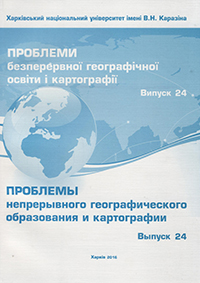Problem aspects of field mapping data collection for the needs of forest management
Abstract
Forestry is complex, dynamic, and multidimensional. We must meet the needs of the forest as well as the pressures of economic efficiency. GIS technology profoundly and positively impacts the way land managers, timber managers, and forestry specialists manage timber resources. GIS can help us understand forest science, economics, and social principles. Editing paper maps is quite difficult, especially in the middle of a forest. Staff working in the field used to bring along paper documents, notepads, and cameras. It could take hundreds of hours to complete the fieldwork for a forest. GIS provides much more information than simple paper maps. Hence, the Forestry department has to start exploring the use of online apps. Maps created with GIS technologies can include data about the owners, forest cover, economic plans, timber harvesting, forest age, and other information. The article gives a detailed analysis of modern requirements to mapping for the needs of forest management. Existing ways of geospatial data collection and their limitations have been analyzed. Much attention is given to most probable technical means of this kind of information collection, final accuracy of the data in case of using those technical means has been analyzed. Based on the findings, the paper proposes ways to increase accuracy of data collection.
Downloads
References
2. Gensiruk, S.A., Kopij, L.I. (2008)/ Pry`ncy`py` zbalansovanogo pry`rodokory`stuvannya ta pry`rodovidnovlennya u lisogospodars`komu vy`robny`cztvi [Principles of sustainable nature and natural restoration of forest production]. Sustainable environmental management and natural regeneration, 2, 12-14.
3. Instructions on setting (restoration) of land boundaries in nature (the field) and their consolidation boundary marks. Available at: //zakon4.rada.gov.ua/laws/show/z0391-10
4. Instructions for ordering the forest fund of Ukraine. First part. Field work. Available at: http://dklg.kmu.gov.ua/forest/ control/uk/publish/article119314
5. Kozub, A.M., Suvorova, N.O. (2012). Opty`mizaciya komplektu zasobiv opty`ko-elektronnogo sposterezhennya dlya aerokosmichnogo monitory`ngu lisovy`x masy`viv [Optimization set of tools for optical-electronic surveillance for forests aerospace monitoring]. Aerospace Engineering and Technology, 3, 108-112.
6. Ryabij, V., Tregub, M. (2011). Vy`znachennya dopusty`my`x znachen` serednix kvadraty`chny`x poxy`bok ploshh zemel`ny`x dilyanok za mezhamy` naseleny`x punktiv [Determination of allowable values of mean square errors in land areas outside settlements]. Geodesy, cartography and aerial photography, 74, 136-142.
7. Sesin, V.A. (2013). Geoinformacijny`j pidxid do kartografuvannya lisovogo gospodarstva [Geoinformation mapping approach to forestry]. Journal of Surveying and Mapping, 3, 27-32.
8. Yurovchy`k, V.G. (2007). Vprovadzhennya geoinformacijny`x texnologij u doslidzhennya lisiv i lisogospodars`kogo potencialu [The introduction of information technologies in forests research and forest potential]. Proceedings of International scientific conference of students and young scientists «Region-2007: social and geographic aspects». Xarkiv: XNU im. V.N. Karazina, 30-31.





